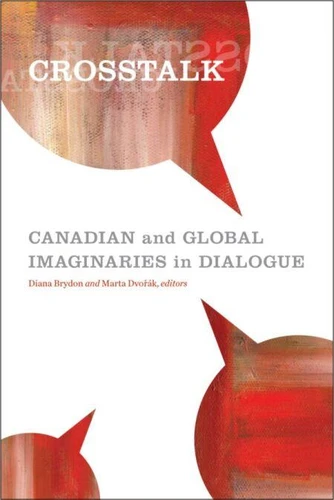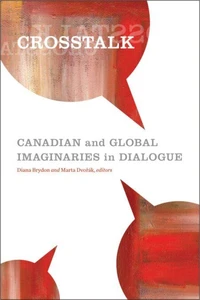Crosstalk. Canadian and Global Imaginaries in Dialogue
Par : ,Formats :
Disponible dans votre compte client Decitre ou Furet du Nord dès validation de votre commande. Le format ePub est :
- Compatible avec une lecture sur My Vivlio (smartphone, tablette, ordinateur)
- Compatible avec une lecture sur liseuses Vivlio
- Pour les liseuses autres que Vivlio, vous devez utiliser le logiciel Adobe Digital Edition. Non compatible avec la lecture sur les liseuses Kindle, Remarkable et Sony
 , qui est-ce ?
, qui est-ce ?Notre partenaire de plateforme de lecture numérique où vous retrouverez l'ensemble de vos ebooks gratuitement
Pour en savoir plus sur nos ebooks, consultez notre aide en ligne ici
- Nombre de pages330
- FormatePub
- ISBN978-1-55458-014-9
- EAN9781554580149
- Date de parution07/08/2012
- Protection num.Digital Watermarking
- Taille3 Mo
- Infos supplémentairesepub
- ÉditeurWilfrid Laurier University Press
Résumé
What are the fictions that shape Canadian engagements with the global? What frictions emerge from these encounters? In negotiating aesthetic and political approaches to Canadian cultural production within contexts of global circulation, this collection argues for the value of attending to narratorial, lyric, and theatrical conventions in dialogue with questions of epistemological and social justice.
Using the twinned framing devices of crosstalk and cross-sighting, the contributing authors attend to how the interplay of the verbal and the visual maps public spheres of creative engagement today. Individual chapters present a range of methodological approaches to understanding national culture and creative labour in global contexts. Through their collective enactment of methodological crosstalk, they demonstrate the productivity of scholarly debate across differences of outlook, culture, and training.
In highlighting convergences and disagreements, the book sharpens our understanding of how literary and critical conventions and theories operate within and across cultures.
Using the twinned framing devices of crosstalk and cross-sighting, the contributing authors attend to how the interplay of the verbal and the visual maps public spheres of creative engagement today. Individual chapters present a range of methodological approaches to understanding national culture and creative labour in global contexts. Through their collective enactment of methodological crosstalk, they demonstrate the productivity of scholarly debate across differences of outlook, culture, and training.
In highlighting convergences and disagreements, the book sharpens our understanding of how literary and critical conventions and theories operate within and across cultures.
What are the fictions that shape Canadian engagements with the global? What frictions emerge from these encounters? In negotiating aesthetic and political approaches to Canadian cultural production within contexts of global circulation, this collection argues for the value of attending to narratorial, lyric, and theatrical conventions in dialogue with questions of epistemological and social justice.
Using the twinned framing devices of crosstalk and cross-sighting, the contributing authors attend to how the interplay of the verbal and the visual maps public spheres of creative engagement today. Individual chapters present a range of methodological approaches to understanding national culture and creative labour in global contexts. Through their collective enactment of methodological crosstalk, they demonstrate the productivity of scholarly debate across differences of outlook, culture, and training.
In highlighting convergences and disagreements, the book sharpens our understanding of how literary and critical conventions and theories operate within and across cultures.
Using the twinned framing devices of crosstalk and cross-sighting, the contributing authors attend to how the interplay of the verbal and the visual maps public spheres of creative engagement today. Individual chapters present a range of methodological approaches to understanding national culture and creative labour in global contexts. Through their collective enactment of methodological crosstalk, they demonstrate the productivity of scholarly debate across differences of outlook, culture, and training.
In highlighting convergences and disagreements, the book sharpens our understanding of how literary and critical conventions and theories operate within and across cultures.




